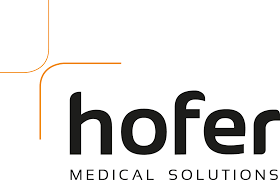Licences for new technology and market development through licences
Method in brief
Successful Open Innovation enterprises are increasingly experiencing that the professional handling of property rights is the first basis to creating an organised, minimal-risk and commercially successful transfer of expertise.
Licences form a core element of successful innovation projects. They determine the necessary ownership of rights or securing of rights and, as a result, fair compensation, settlement and remuneration agreements are met.
Application and use
Open Innovation provides enterprises with the opportunity to use external expertise or to find utilisation opportunities outside of the enterprise for their own expertise.
Whether it be a research facility making the technological developments of an enterprise available or the product aspects of a user or designer community are to be used - in both these instances, intellectual property is transferred.
It is in particular the cost-intensive, technical further developments that require sufficient protection of intellectual property so that the innovative enterprise is able to maintain their exclusive market position up against the competition.
There is often a disagreement between Open Innovation and property rights (patents, as well as brands, designs or copyright). However, especially with Open Innovation it is important to clarify the property rights that exist. If you would like to gift something, you have to own it. Property rights make innovations tradable.
Successful Open Innovation enterprises are increasingly experiencing that the professional handling of property rights is the first basis to creating an organised, minimal-risk and commercially successful transfer of expertise.
Tips for Fairness
Independent of which Open Innovation tool is used, it is essential to plan the process well and to clarify the necessary questions in advance:
- What rights are required for implementation?
Under what circumstances is a licence required (exclusive/non-exclusive, which markets, etc.) - Who does the created intellectual property belong to?
All those involved must be clear on who has the rights, and when and where they are permitted to use them. - Who is moderating and/or organising the process?
Ongoing communication and agreement with the participation is required. - Who is assigned which tasks?
Roles and tasks must be determined in advance and to continuously maintain this categorisation is deemed to be beneficial for the process and success of a project. - How should the innovation contribution be honoured?
Is a share in the success planned?
Should risk-sharing be envisaged?
From a legal perspective, it is advisable to assign shares to the innovation potential for the later use of a technological innovation. It is in this way that costly disputes can be avoided, which would in turn present a risk to the innovation.
Reading tips and sources
- Intellectual Property Agreement Guide IPAG, online at: https://www.ipag.at/
- Bogers, M., Bekkers, R., Granstrand, O. (2012): “Intellectual property and licensing strategies in open collaborative innovation”
Online at: http://www.marcelbogers.com/Pubs/Bogers-Bekkers-Granstrand_2012_ch3_Intellectual-Property-and-Licensing-Strategies-in-Open-Collaborative-Innovation.pdf
Progress report

The trading company Hofer GmbH & Co KG was taken over by DI Christian Maier in 2003 and further developed. At the main site Fürstenfeld in Styria, the company manufactures and distributes osteosynthesis systems and in doing so, has specialised in the development, production and distribution of treatment systems for traumatology, orthopaedics and neurosurgery. Hofer Medical Solutions has developed itself into one of Austria’s technology leaders in the field of minimal-invasive operation methods over the last few years.
In the interview, Mr. Christian Maier Dipl.-Ing., Managing Director of Hofer Medical, reported of his experiences with the first-time in-licensing of a technology.

